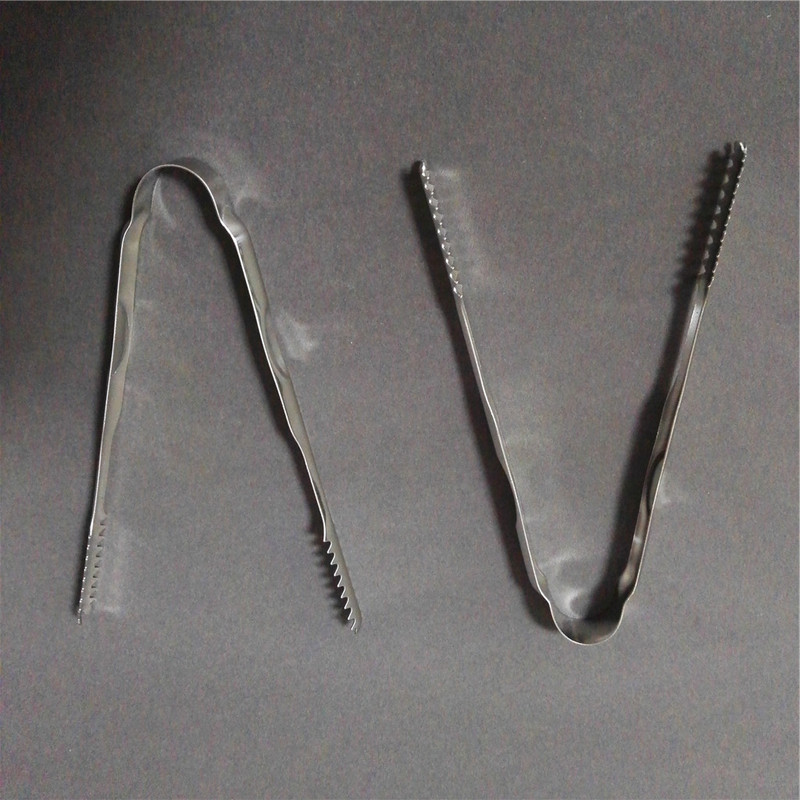7 inch Stainless steel ice tong
7 inch Stainless steel ice tong
- Detail
- Parameters
- Review
7 inch Stainless steel ice tong
Packaging & Delivery
Packaging Details:
Packing:800pcs/ctn
Meas:34x66x54cm
Nw/Gw:22/23Kgs
Delivery Detail:5-30 days
Product Description
Size:17.3x1.5cm
Material:steel 201
Weight:about 27 grams
More Photos
1. What are the best types of tongs for different uses?
The best tongs vary by task.
Here’s a quick guide:
Grilling/BBQ: Long stainless steel tongs (12–16 inch) with locking handles are ideal for outdoor cooking.
Frying/Sautéing: Silicone-tipped tongs (9–12 inch) are heat-resistant and safe for non-stick cookware.
Serving/Buffet: Small stainless steel or plastic tongs (6–9 inch) work well for salad, bread, and pastries.
Ice/Sugar: Mini tongs (4–6 inch) are perfect for handling ice cubes or small snacks.
General Use: A 12-inch silicone and stainless steel tong is a versatile, all-purpose option for daily cooking.
2. How do I choose the right tongs?
Choosing the right tongs depends on what you plan to use them for. Consider these key factors:
Length:
9–12 inch tongs are ideal for everyday kitchen use.
12–16 inch tongs offer more reach for grilling and BBQ.
Material:
Silicone-tipped tongs protect non-stick cookware and resist high heat.
Stainless steel tongs are durable and ideal for grilling or heavy-duty use.
Plastic or nylon tongs are lightweight and best for serving.
Grip & Comfort:
Look for non-slip handles, locking mechanisms, and ergonomic design for better control and storage.
Application:
Use mini tongs for serving or desserts, standard tongs for cooking, and heavy-duty tongs for outdoor grilling or commercial kitchens.
Always match your tong type to the heat level, cookware surface, and food size for safe and efficient use.
3.What are tongs used for?
Tongs are versatile kitchen and serving tools used to grip, lift, turn, or serve food without direct hand contact. Common uses include:
Cooking: Flipping meat, tossing salads, turning vegetables, or removing items from boiling water or hot oil.
Grilling: Handling food over open flames or high heat while keeping a safe distance.
Serving: Offering salad, pastries, bread, or appetizers at buffets, parties, and catering events.
Hygiene: Preventing contamination by keeping hands away from food during preparation and serving.
Whether for home cooking, BBQs, or commercial food service, tongs help ensure safe, clean, and efficient handling of food
4.How do I clean or sanitize food tongs properly?
Proper cleaning and sanitizing of food tongs is essential for food safety and hygiene. Follow these steps:
For Daily Cleaning:
Wash with warm water and dish soap immediately after use.
Use a brush to remove food residues from joints or silicone tips.
Rinse thoroughly and dry completely before storage.
For Dishwasher-Safe Tongs:
Place them on the top rack of your dishwasher for a thorough clean (check product label for compatibility).
For Deep Sanitizing (especially after handling raw meat):
Soak in a solution of 1 tablespoon of bleach per 1 gallon of water for at least 1 minute.
Rinse with clean water and air-dry.
Always ensure the tongs are fully dry before storing to prevent rust or mold, especially with metal or silicone materials.
5.What are the common disadvantages or problems with tongs?
While tongs are essential kitchen tools, some types may come with minor drawbacks depending on design or usage:
Poor Grip or Slippage:
Low-quality tongs may not hold food securely, especially oily or delicate items.
Too Stiff or Too Loose:
Some tongs may require excessive hand pressure or feel too flimsy for control.
Scratching Cookware:
All-metal tongs can damage non-stick surfaces if not silicone-coated.
Heat Transfer:
Metal handles without insulation can get hot quickly, causing burns.
Storage Issues:
Tongs without locking mechanisms take up more drawer space or won’t stay closed.
Wear and Tear on Tips:
Silicone or nylon tips can degrade or melt if exposed to extreme heat beyond their rated limits.
Choosing high-quality, well-designed tongs helps avoid these issues and ensures a safe, efficient cooking experience.

